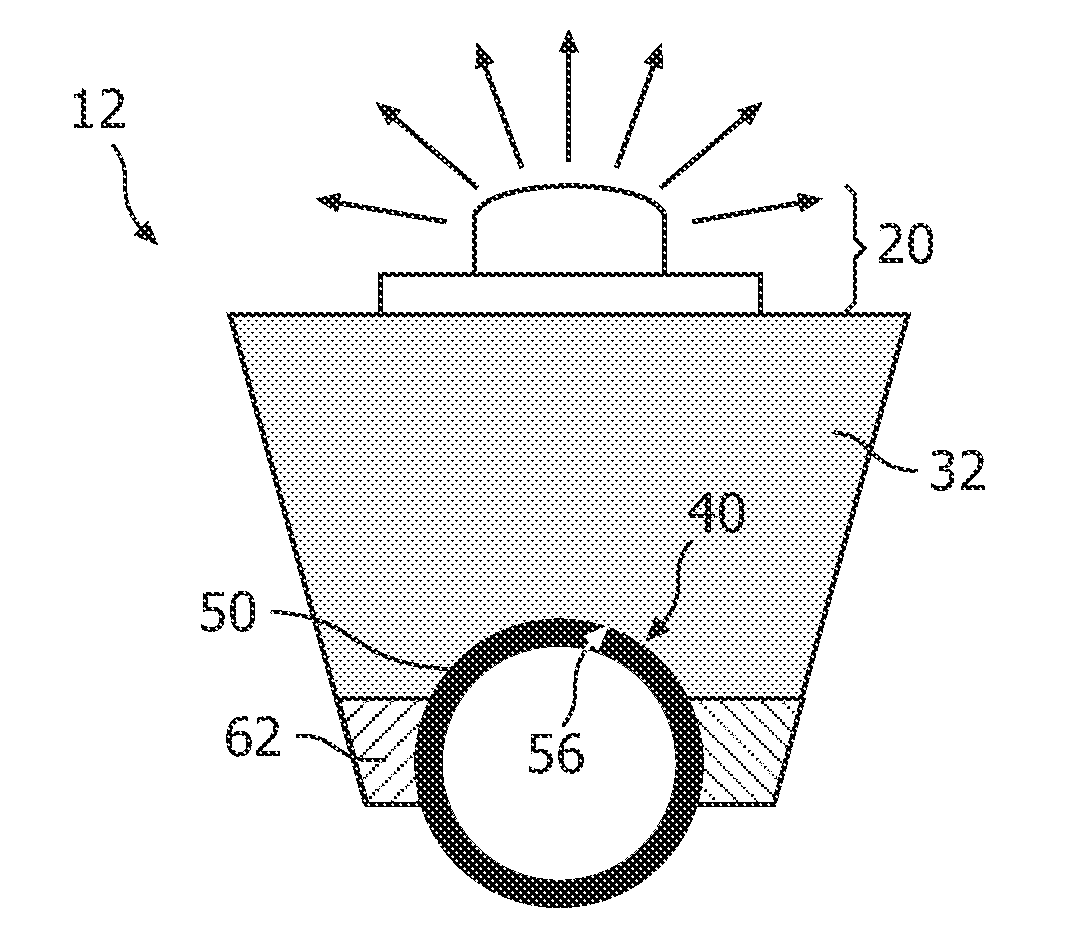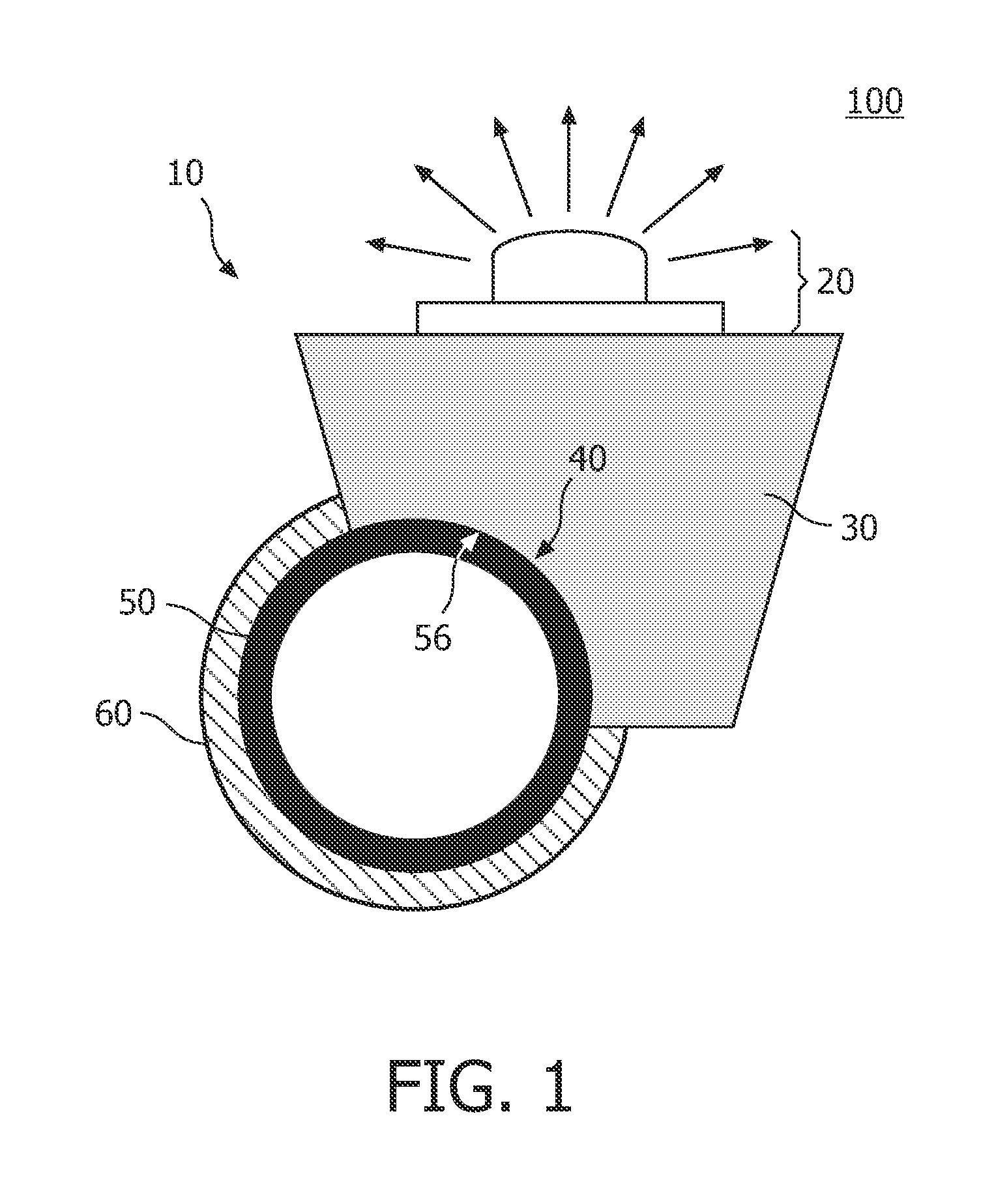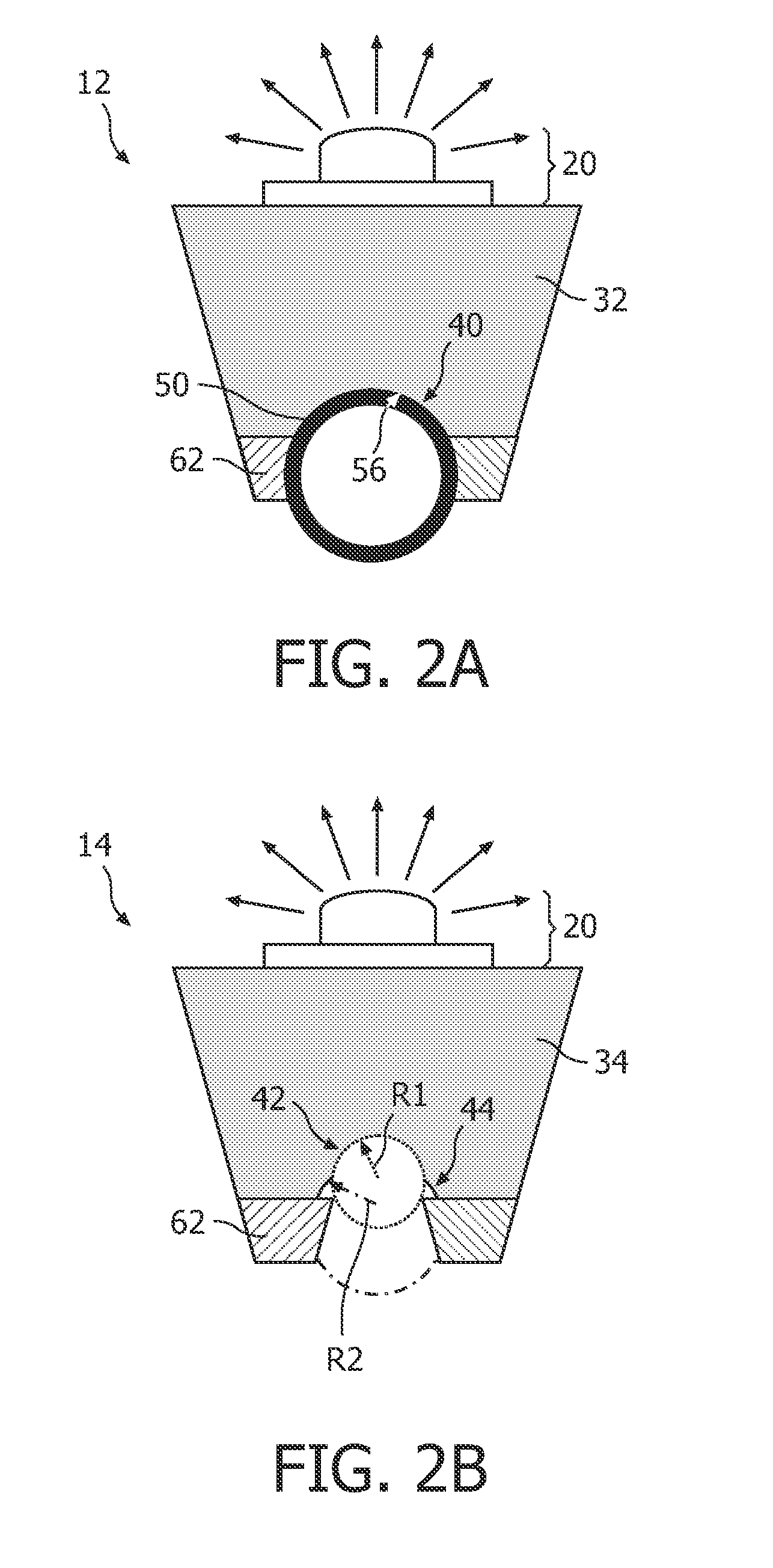Light emitting module, heat sink and illumination system
a technology of light emitting modules and heat sinks, applied in the direction of discharge tube main electrodes, semiconductor devices of light sources, lighting and heating apparatus, etc., can solve the problems of insufficient cooling of light sources, damage to light sources, and increase the chance of cooling fluid leakage, so as to reduce complexity
- Summary
- Abstract
- Description
- Claims
- Application Information
AI Technical Summary
Benefits of technology
Problems solved by technology
Method used
Image
Examples
Embodiment Construction
FIG. 1 shows a schematic cross-sectional view of an illumination system 100 comprising a light emitting module 10 according to the invention. The illumination system 100 comprises a cooling circuit (not shown) comprising a cooling body 50 being a cooling pipe 50. The illumination system 100 further comprises the light emitting module 10 according to the invention.
The light emitting module 10 comprises a light source 20 and a heat sink 30. The light source 20 is applied on the heat sink 30 and is thermally connected to the heat sink 30 to allow heat generated in the light source 20 to be transferred away from the light source 20. The light source 20 may, for example, be a light emitting diode 20, or a laser diode 20. The intensity of the light emitted by these light emitting diodes 20 or laser diodes 20 generally depends on the cooling of the light emitting diode 20 or the laser diode 20 and thus the cooling is essential for efficient usage of such a light source 20. Also other light...
PUM
 Login to View More
Login to View More Abstract
Description
Claims
Application Information
 Login to View More
Login to View More - R&D
- Intellectual Property
- Life Sciences
- Materials
- Tech Scout
- Unparalleled Data Quality
- Higher Quality Content
- 60% Fewer Hallucinations
Browse by: Latest US Patents, China's latest patents, Technical Efficacy Thesaurus, Application Domain, Technology Topic, Popular Technical Reports.
© 2025 PatSnap. All rights reserved.Legal|Privacy policy|Modern Slavery Act Transparency Statement|Sitemap|About US| Contact US: help@patsnap.com



